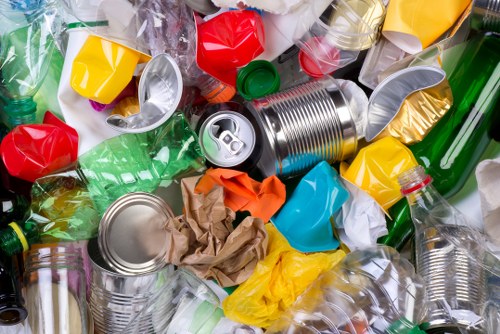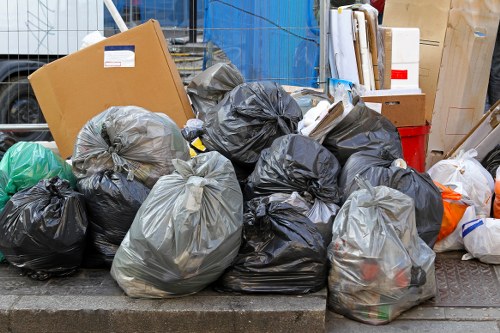Flat Clearance in Garden Clearance: A Comprehensive Guide

When it comes to maintaining a beautiful and clutter-free garden, flat clearance in garden clearance plays a pivotal role. Whether you’re preparing for the planting season, renovating your outdoor space, or simply tidying up, understanding the ins and outs of flat clearance can make the process seamless and efficient.
Flat clearance involves the removal of unwanted items from your garden, ensuring that the space remains organized and aesthetically pleasing. This service is essential not only for enhancing the visual appeal of your garden but also for promoting a healthy and sustainable outdoor environment.
In this article, we will delve into the various aspects of flat clearance in garden clearance, providing you with valuable insights and practical tips to manage your garden effectively.
The Importance of Flat Clearance in Garden Maintenance

Maintaining a garden requires consistent effort and attention to detail. Flat clearance is a crucial component of garden maintenance for several reasons:
- Enhances Aesthetics: Removing cluttered items such as old furniture, broken tools, and debris improves the overall look of your garden.
- Prevents Pest Infestations: Unwanted items can become breeding grounds for pests. Regular clearance helps in minimizing such risks.
- Promotes Plant Health: Clearing away dead leaves and branches ensures that plants receive adequate sunlight and air circulation.
- Maximizes Space: A clutter-free garden offers more space for planting, relaxation, and other outdoor activities.
By prioritizing flat clearance, homeowners can ensure that their gardens remain both functional and inviting.
Key Components of Flat Clearance

Flat clearance encompasses several tasks aimed at decluttering and organizing your garden space. The key components include:
- Debris Removal: Collecting and disposing of fallen leaves, twigs, and other garden waste.
- Furniture Clearance: Removing old or unused garden furniture to make space for new additions.
- Tool Management: Organizing and storing gardening tools to prevent clutter and ensure easy access.
- Waste Disposal: Properly disposing of bulky items such as broken pots, damaged equipment, and other large debris.
Addressing these components systematically can significantly improve the functionality and appearance of your garden.
Benefits of Professional Flat Clearance Services

While DIY clearance is an option, hiring professional flat clearance services offers numerous advantages:
- Expertise: Professionals have the knowledge and experience to handle various clearance tasks efficiently.
- Time-Saving: Outsourcing clearance can free up your time for other important tasks.
- Proper Disposal: Professionals ensure that waste is disposed of in an environmentally friendly manner.
- Safety: Handling large or hazardous items can be dangerous. Professionals are trained to manage such tasks safely.
Investing in professional services can lead to a more effective and hassle-free garden clearance process.
Steps to Effective Flat Clearance

Achieving effective flat clearance involves a systematic approach. Here are the essential steps:
- Assessment: Evaluate the current state of your garden to identify areas that require clearance.
- Planning: Develop a clearance plan outlining the tasks to be completed and the resources needed.
- Execution: Implement the clearance plan by removing unwanted items and organizing the space.
- Disposal: Dispose of cleared items responsibly, adhering to local regulations and environmental guidelines.
- Maintenance: Establish a regular maintenance routine to keep your garden clutter-free.
Following these steps ensures a thorough and efficient clearance process, resulting in a well-maintained garden.
Common Challenges in Flat Clearance

While flat clearance is essential, several challenges can arise during the process:
- Volume of Waste: Gardens can accumulate a significant amount of waste over time, making clearance a daunting task.
- Access Issues: Limited access to certain areas of the garden can hinder the clearance process.
- Heavy Items: Removing bulky or heavy items requires specialized equipment and expertise.
- Regulatory Compliance: Ensuring that waste disposal complies with local regulations can be complex.
Addressing these challenges proactively can streamline the clearance process and prevent potential setbacks.
Environmental Impact of Garden Clearance
Proper garden clearance has a positive environmental impact. By responsibly disposing of waste, you contribute to:
- Reducing Landfill Burden: Minimizing the amount of waste sent to landfills helps in conserving space and reducing pollution.
- Promoting Recycling: Recycling garden waste, such as composting organic materials, supports sustainable practices.
- Preserving Biodiversity: Maintaining a clean garden environment supports local flora and fauna.
Embracing sustainable clearance practices not only benefits your garden but also the broader ecosystem.
Choosing the Right Flat Clearance Service
Selecting a reliable flat clearance service is crucial for achieving the desired results. Consider the following factors when making your choice:
- Reputation: Look for services with positive reviews and a proven track record.
- Services Offered: Ensure that the service provider offers comprehensive clearance solutions tailored to your needs.
- Pricing: Compare pricing structures to find a service that offers value for money without compromising quality.
- Environmental Practices: Choose providers committed to eco-friendly disposal and recycling methods.
- Availability: Ensure that the service can accommodate your schedule and complete the clearance in a timely manner.
By carefully evaluating these factors, you can select a service that meets your garden clearance requirements effectively.
DIY Flat Clearance Tips
For those who prefer a hands-on approach, here are some DIY tips for effective flat clearance:
- Organize Your Workspace: Clear pathways and designate areas for sorting items.
- Sort Items: Categorize items into keep, donate, recycle, and dispose piles.
- Use Proper Tools: Equip yourself with the necessary tools, such as gloves, bins, and transportation aids.
- Schedule Regular Sessions: Break down the clearance process into manageable sessions to avoid overwhelm.
- Stay Safe: Handle heavy or hazardous items with care to prevent injuries.
Implementing these tips can make the DIY clearance process more manageable and efficient.
Maintenance Strategies Post-Clearance
After completing flat clearance, maintaining a clutter-free garden requires ongoing effort. Consider the following strategies:
- Regular Inspections: Periodically review your garden to identify and address clutter before it becomes unmanageable.
- Implement Storage Solutions: Utilize storage containers, shelves, and designated areas for gardening tools and equipment.
- Adopt Sustainable Practices: Compost organic waste and recycle materials to minimize environmental impact.
- Educate Household Members: Encourage everyone in the household to contribute to maintaining an organized garden.
Consistent maintenance ensures that your garden remains a serene and enjoyable space.
Cost Considerations for Flat Clearance
The cost of flat clearance can vary based on several factors:
- Size of the Garden: Larger gardens may require more time and resources for clearance.
- Volume of Waste: The amount of debris and unwanted items impacts the overall cost.
- Accessibility: Difficult-to-reach areas may necessitate additional equipment or labor.
- Service Provider: Different providers may have varying pricing structures based on their expertise and services offered.
- Additional Services: Extras such as recycling, composting, or special disposal methods can influence the cost.
Understanding these factors can help you budget effectively for your garden clearance needs.
Preparing for Flat Clearance Day
Preparation is key to a successful flat clearance. Follow these steps to ensure everything runs smoothly:
- Create a Checklist: Outline the tasks that need to be completed and prioritize them.
- Gather Necessary Tools: Ensure you have all the required tools and equipment ready.
- Clear Access Points: Make sure pathways and access points are unobstructed for easy movement.
- Communicate with Your Team: If working with a team or professionals, ensure everyone is aware of their roles and responsibilities.
- Plan for Waste Disposal: Arrange for appropriate disposal or recycling of cleared items.
Proper preparation minimizes delays and enhances the efficiency of the clearance process.
Seasonal Considerations for Garden Clearance
Different seasons present unique challenges and opportunities for garden clearance:
- Spring: Ideal for clearing winter debris and preparing the garden for new growth.
- Summer: Focus on maintaining gardens through regular upkeep and managing plant health.
- Autumn: Perfect for raking leaves, pruning, and preparing for the colder months.
- Winter: Limited clearance activities, but essential for planning next year's garden layout.
Aligning your clearance activities with seasonal changes ensures that your garden remains in top condition year-round.
Tools and Equipment for Flat Clearance
Having the right tools and equipment is essential for efficient garden clearance. Some must-have items include:
- Gloves: Protect your hands while handling debris and sharp objects.
- Pruning Shears: Essential for trimming plants and removing unwanted branches.
- Wheelbarrow: Facilitates the transportation of heavy or bulky items.
- Rake: Helps in collecting leaves, twigs, and other small debris.
- Trash Bags/Bins: For organizing and disposing of cleared items.
Investing in quality tools can significantly enhance the efficiency and effectiveness of your clearance efforts.
Safety Tips for Flat Clearance
Ensuring safety during flat clearance is paramount. Follow these tips to prevent accidents and injuries:
- Wear Protective Gear: Use gloves, safety glasses, and sturdy footwear to protect yourself.
- Handle Tools Properly: Use tools as intended and follow manufacturer guidelines.
- Lift Correctly: Use your legs when lifting heavy items to avoid back injuries.
- Stay Hydrated: Keep yourself hydrated, especially during hot weather.
- Take Breaks: Avoid overexertion by taking regular breaks during the clearance process.
Adhering to these safety practices ensures a smooth and injury-free clearance experience.
Eco-Friendly Flat Clearance Practices
Adopting eco-friendly practices during flat clearance minimizes environmental impact. Consider the following approaches:
- Composting: Turn organic waste into compost to enrich your garden soil.
- Recycling: Recycle materials like metal, glass, and plastic whenever possible.
- Donating: Give away reusable items to local charities or community centers.
- Reducing Waste: Opt for minimal packaging and reusable containers when disposing of items.
- Using Biodegradable Products: Choose biodegradable bags and cleaning products to lessen environmental harm.
Incorporating these practices supports sustainability and promotes a healthier environment.
Legal Considerations in Garden Clearance
When undertaking garden clearance, it’s important to be aware of legal considerations to avoid potential issues:
- Waste Disposal Regulations: Comply with local laws regarding the disposal of garden waste and bulky items.
- Permit Requirements: Obtain necessary permits for disposing of large or hazardous items.
- Zoning Laws: Ensure that your clearance activities adhere to local zoning and property guidelines.
- Recycling Mandates: Follow regulations related to recycling specific materials.
- Protecting Wildlife: Avoid disrupting local wildlife habitats during clearance.
Understanding and adhering to these legal aspects ensures a trouble-free clearance process.
Impact of Flat Clearance on Property Value
Maintaining a well-organized garden through flat clearance can positively influence your property’s value:
- First Impressions: A tidy garden creates a positive first impression for potential buyers.
- Enhanced Curb Appeal: Regular clearance maintains the aesthetic appeal of your property.
- Functional Outdoor Space: Clear and organized gardens offer more usable space for outdoor activities.
- Healthy Plants: Proper clearance supports the health and growth of plants, contributing to a vibrant landscape.
- Reduced Maintenance Costs: Organized gardens require less maintenance, saving time and money.
Investing in flat clearance can yield significant returns by boosting your property’s marketability and value.
Case Studies: Successful Flat Clearance Projects
Examining successful flat clearance projects can provide valuable insights and inspiration:
- Urban Gardens: In densely populated areas, effective clearance maximizes limited space, enhancing livability and aesthetics.
- Eco-Friendly Homes: Sustainable clearance practices in eco-friendly homes promote environmental stewardship and resource conservation.
- Residential Complexes: Regular clearance in residential areas maintains communal gardens, fostering a sense of community and pride among residents.
- Commercial Properties: Clear and well-maintained garden spaces in commercial properties attract customers and elevate the business’s image.
These case studies highlight the diverse applications and benefits of flat clearance in various settings.
Future Trends in Garden Clearance
The field of garden clearance is evolving with emerging trends aimed at enhancing efficiency and sustainability:
- Automation: The use of automated tools and machinery streamlines the clearance process.
- Smart Technology: Integration of smart sensors and monitoring systems aids in efficient waste management.
- Sustainable Practices: Growing emphasis on eco-friendly clearance methods promoting recycling and composting.
- Customized Services: Tailored clearance solutions cater to the specific needs of different garden types and sizes.
- Community Initiatives: Collaborative efforts among communities to manage and maintain shared garden spaces.
Staying abreast of these trends can help homeowners adopt innovative and effective clearance strategies.
Conclusion: Embracing Flat Clearance for a Beautiful Garden
Flat clearance is an essential aspect of garden maintenance, offering numerous benefits from enhanced aesthetics to increased property value. Whether you choose to undertake the process yourself or enlist professional services, prioritizing clearance ensures a harmonious and thriving outdoor space.
By understanding the key components, overcoming challenges, and adopting sustainable practices, you can maintain a beautiful garden that serves as a sanctuary for relaxation and enjoyment.
Ready to transform your garden? Contact us today to book your flat clearance service and take the first step towards a pristine outdoor haven.